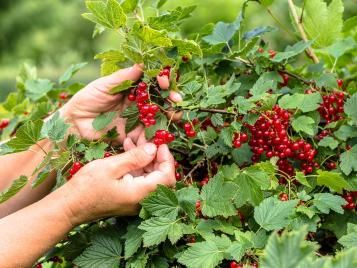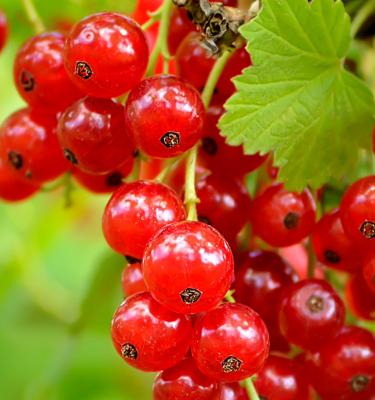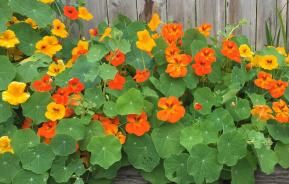How to grow currants
Cultivation
All currants appreciate a sunny position, although light, dappled shade is acceptable. They need a moist, but free-draining soil that doesn’t become waterlogged in winter.
It will pay dividends to improve the structure of all soils by adding lots of organic matter, such as compost or soil improver. This is particularly the case with clay soils, where it will improve drainage, and on light sandy soils, where it will increase its moisture-holding capacity.
Currant varieties
- Blackcurrant: Ben Lomond and Ben Sarek are traditional heavy yielding varieties.Ebony and Wellington produce much sweeter fruit. Jostaberry is a cross between blackcurrant and gooseberry and produces huge fruit
- Redcurrant: Red Lake has very large fruit. Laxton’s No.1 is a heavy cropper. Rovada produces huge strings of large fruit
- Whitecurrant: White Grape has the best taste, but White Versailles carries a heavier crop

Planting currants
Plant bare-root plants in late autumn (October to November) or in February. Leave 1.8m (5ft) between currant bushes.
Plant bare-root currants in winter. November or December are best, although it can be done right up to the end of February, whenever the soil isn’t frozen solid or waterlogged. Container-grown currants can be planted at just about any time of year.
Dig a hole 60x60cm (2x2ft) and 30cm (1ft) deep. Add a layer of organic matter into the base of the hole and dig in. Place the roots of redcurrants and whitecurrants in the planting hole at the same depth as they were originally growing, so that the old soil mark is at soil level. Place the roots of blackcurrants in the planting hole so that the old soil mark is now at least 8cm (3in) below the new soil level. This will encourage a continuous production of new stems from below ground level.
Now mix in more soil improver to the soil and fill in the planting hole. Add a general granular plant food and water in well. Finally, add a 5cm (2in) deep mulch of well rotted garden compost, bark or other bulky organic material around the root area.
How to care for currants
Plants will need watering during dry weather, especially as the fruit is swelling.
Feed the plants every spring with a high potash plant food and replenish the mulch layer of organic matter. Avoid using a hoe to control weeds as this tool could easily damage the shallow rooting system. Instead, hand weed or use a weedkiller.
As soon as the fruit start to turn colour, birds will be attracted to the plants. Drape nets over the bushes in June to keep them away.
Pruning and training
Although they come from the same plant family, redcurrants and whitecurrants are pruned totally differently to blackcurrants.
All three currants can be grown as bushes, that usually reach about 1.5m (5ft) tall and the same wide, although redcurrants and whitecurrants can also be grown as vertical cordons.
Redcurrants and whitecurrants
Fruit forms on fruiting spurs (stubby sideshoots), so pruning is designed to encourage more of these. During winter, cut back the new leader growth put on in the previous summer by half. Then reduce sideshoots growing from these main branches to about 5cm (2in) in length. During summer (June) cut back all new sideshoots so they carry just 4 or 5 leaves.
Blackcurrants
The main annual pruning should be carried out in winter when plants are dormant. Start 2 years after planting by cutting out weak branches and twiggy stems. Cut out completely about one-third of all old stems to encourage new growth from below ground level. During subsequent winters, do the same pruning so that no wood on the bush is more than 4 years old.
Harvesting currants

Most currant varieties will ripen during July and into August. Pick fully ripened fruit in stages. The fruit at the top of the truss will be the largest and will ripen first. Pick every week during dry weather – if the fruit is wet they will not store well, but turn mouldy. All currants freeze well.
Mature plants will produce 3-4kg (6-9lb) of fruit each year.
| Flowering season(s) | Spring |
|---|---|
| Foliage season(s) | Spring, Summer |
| Sunlight | Partial shade, Full sun |
| Soil type | Chalky, Clay, Loamy, Sandy |
| Soil pH | Neutral |
| Soil moisture | Moist but well-drained |
| Ultimate height | Up to 1.5m (5ft) |
| Ultimate spread | Up to 1.5m (5ft) |
| Time to ultimate height | 5-7 years |









